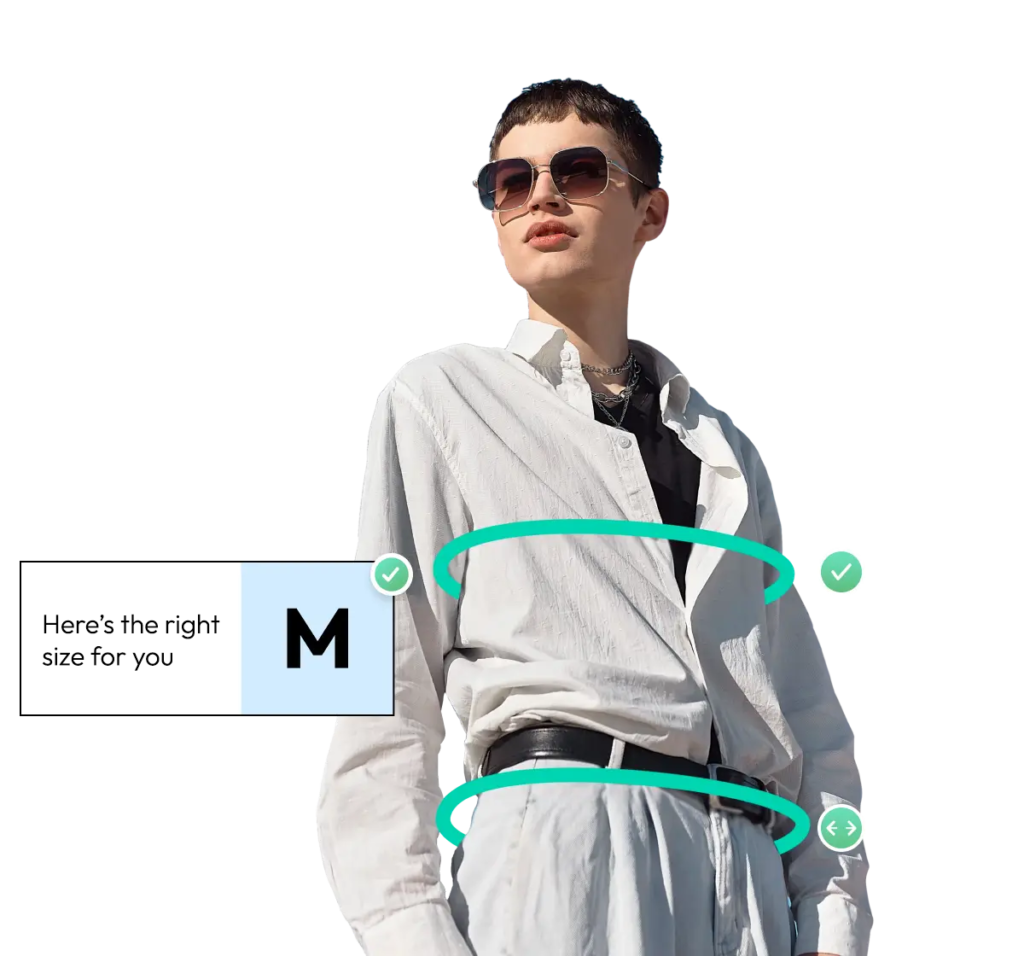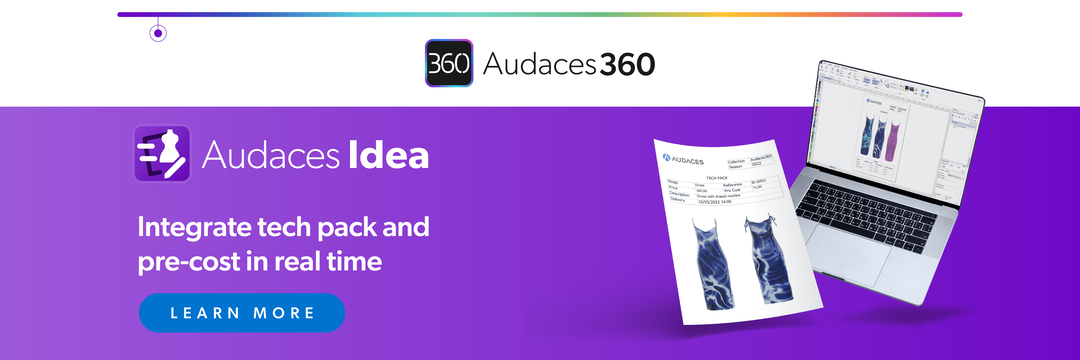Summary
- Discover how a clear size guide improves customer confidence and reduces returns.
- Learn practical steps to design a size guide that truly supports your sales.
- Want to stay ahead in fashion? Subscribe to our newsletter!
Do you think a size guide is just a minor detail in your fashion e-commerce store? Well, maybe it’s time to reconsider.
For many shoppers, hesitation about fit is the number one reason for abandoning their carts. A well-crafted size guide removes that uncertainty and builds trust at the crucial moment of purchase.
The truth is, not all size guides are created equal. Many online stores treat them as a checkbox, offering generic charts that do little to help customers. This results in confusion, frustration, and an increase in costly returns.
Ready to do things differently and stay ahead? Check out our tips!
Sumário
What is a size guide?
A size guide is a chart or tool that provides precise measurements for the clothing items you sell. It helps customers understand how a garment will fit before they make a purchase.
By clearly communicating sizing information, you reduce confusion and make online shopping easier for your audience.
In essence, a size guide acts as a bridge between your designs and your customers. Without it, shoppers must guess their size, which can lead to frustration, incorrect purchases, and returns.
Why create a size guide for your online clothing store?
A size guide is essential for any online clothing store because it directly impacts customer satisfaction.
These are the main benefits it offers:
Reduces exchanges and returns
One of the main benefits of a size guide is that it minimizes exchanges and returns. When customers know exactly what size to order, they are far less likely to make mistakes.
Clear size information also protects your brand reputation. Frequent returns can frustrate customers and create negative reviews, which may deter future buyers.
On the other hand, a well-structured size guide ensures that customers get what they expect, keeping satisfaction high.
Increases customer confidence when buying
Uncertainty about sizing is one of the main reasons shoppers abandon their carts. That’s why providing detailed measurements and guidance reduces hesitation.
When buyers are confident they’ve chosen the right size, they are more likely to complete their purchase and return in the future. A size guide communicates that your store understands their needs and wants to make shopping as smooth as possible.
Learn more: A full guide on how to create a clothing brand from scratch
Improves conversion rates

Shoppers are more likely to complete a purchase when they are certain that the item will fit correctly.
A size guide removes a common barrier to buying online: uncertainty. Without it, customers might abandon their carts rather than risk ordering the wrong size. With it, your brand minimizes hesitation, and sales are more likely to happen.
Enhances the customer experience
A thoughtful size guide improves the overall shopping experience. Customers feel supported and informed, which reduces frustration and creates a smoother journey from browsing to checkout.
Visual guides, tips on how to measure, and details about fit help shoppers make confident choices. These positive experiences encourage loyalty and repeat business.
Adapts your store for different audiences
Not all customers have the same body types or sizing expectations. And a size guide helps your store cater to a broader audience.
When you provide different sizes and fit descriptions, you help all customers find what works for them. These descriptions include options like slim, regular, or oversized. This flexibility makes your brand more appealing and accessible.
In a global market, understanding your audience’s body shapes and measurement preferences is key. A clear, adaptable size guide demonstrates that your store is inclusive and attentive to diverse customer needs.
Learn more: How to consider inclusive sizes in your pattern making?
Supports international sales
When selling internationally, sizing standards vary between countries. This is where a good size guide makes the difference. It bridges these differences by converting measurements and offering clear guidance to customers worldwide.
Without this support, international buyers may be hesitant to purchase, fearing that local sizes won’t match your products. By providing detailed conversions and explanations, you make global shopping simple and reliable.
A strong international size guide has the power to expand your market reach. In addition, it improves customer satisfaction across borders and reduces the risk of returns due to sizing confusion.
Learn more: Discover the features and benefits of an apparel size conversion chart
Ready to transform your pattern making process? Learn how to streamline your workflow with digital solutions. Download our free guide now!
How does pattern making impact your size guide?
Pattern making is the foundation of any accurate size guide. The way you develop a garment determines how it will fit different body shapes and sizes. If the pattern is off even slightly, the size guide will reflect incorrect dimensions. And this leads to poor customer fit and higher returns.
Every adjustment in pattern making directly affects the measurements listed in your size guide. They include adding ease, altering proportions, or accounting for fabric stretch.
This is the reason you must ensure that patterns are precise before translating them into sizing charts for consumers.
Furthermore, the fit style of a garment (slim, regular, oversized) impacts the numbers in your size guide. A size guide must communicate not just raw measurements, but how a garment will fit and drape on the body.
Learn more: How to ensure the perfect fit in plus size patterns?
How can I define the measurements for a size guide?
Defining measurements for a size guide begins with understanding the garment type and intended fit. Key points such as chest, waist, hip, length, and sleeve dimensions must align with the design and pattern specifications.
It’s important to consider standard body measurement charts for your target audience. These can provide a baseline, but adjustments may be necessary to match your brand’s fit standards and style.
Finally, testing the measurements on sample garments or prototypes helps validate your size guide. Comparing garment dimensions to real-world results ensures that the guide is accurate and trustworthy.
Learn more: Discover how to craft a custom kids’ clothing size chart
Is it possible to collect real consumer data to create your size guide?
Yes, collecting real consumer data can make your size guide much more accurate and relevant.
Specialized solutions can provide insights into measurement patterns. They allow customers to share their height, weight, and fit preferences, helping brands refine their guides over time.
Analyzing returns and exchanges is another valuable source of data. By examining which sizes have the biggest return rates, you can adjust your measurements and reduce future mistakes.
Using real data ensures that your size guide reflects the actual needs of your customers. This is better than relying solely on industry-standard charts.
Learn more: Boost your e-commerce store with a clothing virtual fitting room
Which measurements should I include in a size guide?

The measurements you include depend on the type of garment, but most clothing items require these basic dimensions:
- Chest/Bust: Measures the fullest part of the chest or bust. Essential for tops, dresses, jackets, and outerwear.
- Waist: Measures the narrowest part of the torso. Crucial for pants, skirts, dresses, and fitted garments.
- Hips: Measures the fullest part of the hips. Important for skirts, pants, and dresses to ensure proper fit.
- Garment body length: Measures from shoulder to hem or waist to hem. Helps customers gauge overall garment coverage.
- Sleeve length: Measures from shoulder seam to cuff. Key for long-sleeve tops, jackets, and dresses.
- Shoulder width: Measures from one shoulder seam to the other. Important for jackets, shirts, and structured garments.
- Inseam: Measures from crotch to hem. Critical for pants and shorts to ensure proper leg length.
- Rise: Measures from the crotch seam to the waistband. Ensures correct fit in pants and skirts.
- Neckline/Collar: Measures the circumference or width of the neck opening. Useful for shirts, blouses, and dresses.
- Fit style information: Indicates whether the garment is slim, regular, oversized, or relaxed. Helps customers interpret measurements in context.
Learn more: Why is a men’s clothing size chart important for your brand?
Create your size guide with the best of Audaces technology
Audaces is a market leader fashion technology company and a reference worldwide. Through a deep understanding of fashion creation and production, we have developed ideal solutions for each stage.
Audaces Pattern
Audaces Pattern is the perfect solution to simplify and speed up your pattern-making process. With intuitive digital tools and smart automation, you can create, edit, and grade patterns efficiently.
Save valuable time and can focus more on the creative and technical decisions that truly shape your collection.
When changes happen, you won’t have to start from scratch. The software makes it easy to adjust measurements, reshape pieces, and test new design variations with precision and speed.
To take it even further, Audaces Pattern integrates seamlessly with the full Audaces ecosystem. This connection allows you to plan, develop, and produce with consistency and accuracy across every stage.
Size & Fit

Size & Fit offers innovative sizing solutions for e-commerce stores. It helps you enhance the shopping experience by addressing one of the most common challenges: finding the perfect fit.
The solution provides a size and fit advisor that helps customers to find the right size. It’s as simple as entering a few details to get the ideal recommendation.
This boosts confidence in their selections, reducing returns and increasing satisfaction.
In addition, we are committed to working closely with you throughout the entire process. From initial implementation to performance analysis, our team will support you at every step.
Did you find this article helpful? Let us know what you think in the comments!
FAQ
A size guide is a chart or tool that provides precise measurements for the clothing items you sell. It helps customers understand how a garment will fit before they make a purchase.
The benefits include reduced exchanges and returns, improved conversion rates, and better customer experience.
Defining measurements for a size guide begins with understanding the garment type and intended fit. Key points such as chest, waist, hip, length, and sleeve dimensions must align with the design and pattern specifications.










